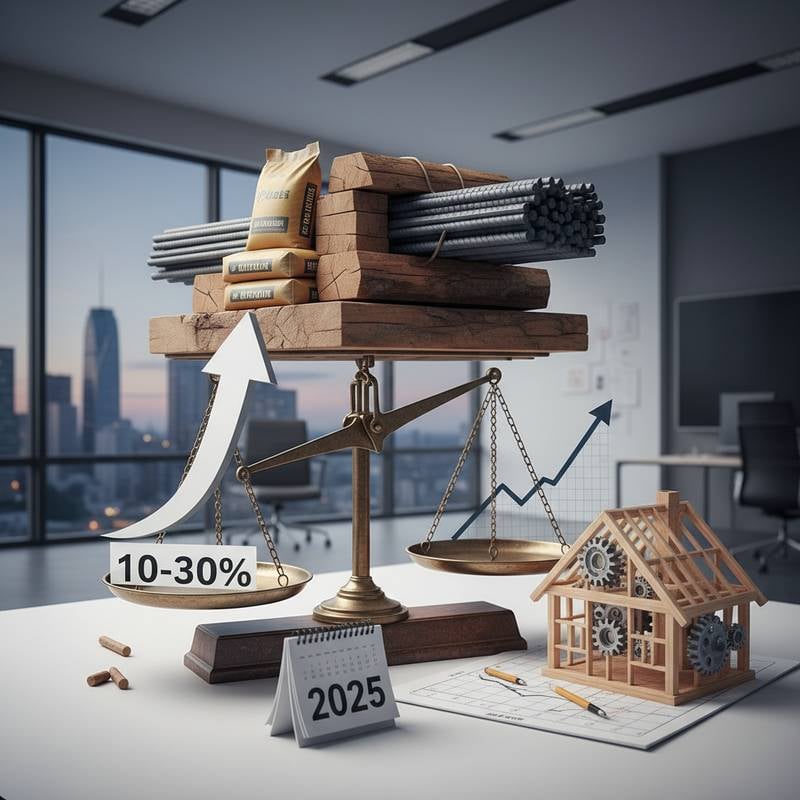Estimate Carbon Neutral Building Costs for Your Next Project
Building a carbon neutral or net zero structure offers environmental benefits but comes with a notable price tag. Industry data suggests that upfront costs for such projects typically run 10 to 15 percent higher than conventional construction. This guide breaks down the process of estimating both initial and ongoing expenses for a home or small commercial retrofit. Whether you are managing the project yourself or acting as an owner representative, these steps will help you build a reliable budget.
Key Factors Before You Begin
Starting a carbon neutral project requires careful preparation to avoid costly missteps. Local building and electrical codes often mandate permits and inspections, especially for solar installations or structural modifications. Safety is paramount; working on roofs, electrical mains, or gas appliances poses significant risks, so always shut off power at the breaker, use fall protection gear, and halt work if you suspect asbestos or mold. Budgeting typically takes 1 to 4 weeks, while construction can span several months, demanding moderate to advanced planning skills and contractor coordination.
Essential Tools and Resources
- Project binder to organize plans and permits.
- Cost estimating spreadsheet for tracking expenses.
- Energy modeling software or a consultant for accurate projections.
- Embodied carbon tools like EC3 for emissions benchmarking.
- Material data sheets, tape measure, and a camera for documentation.
Step-by-Step Guide to Budgeting Carbon Neutral Construction
Follow these actionable steps to develop a comprehensive cost estimate for your carbon neutral building project. Each phase builds on the last, ensuring you account for both financial and environmental impacts.
1. Define Your Project Scope and Objectives
Clearly outline whether your goal is carbon neutral building or net zero construction. Establish specific targets for embodied carbon (emissions from materials) and operational carbon (emissions from energy use). Document these goals in writing to maintain focus throughout the project.
2. Establish a Carbon Budget and Baseline
Use tools like the Embodied Carbon Calculator (EC3) or engage a consultant to measure the emissions of your current design. This baseline will include both embodied and operational carbon dioxide equivalent (CO2e) figures. Having these numbers allows you to track reductions as you refine your plans.
3. Integrate Energy and Cost Modeling
Request basic energy modeling from your designer during the schematic design phase. Alternatively, leverage software like IESVE or Autodesk Insight through your design team to predict annual energy consumption and determine HVAC system sizing. This step ensures your building's energy needs align with net zero goals.
4. Compare Material Costs and Carbon Footprints
Solicit bids for low-carbon alternatives such as specialized concrete mixes, mass timber, or recycled steel. Request emissions data from manufacturers to evaluate the environmental impact of each option. Aim to gather cost and carbon metrics for at least three material choices to make informed decisions.
5. Assess Renewable Energy Options and Incentives
Conduct a solar feasibility study to evaluate rooftop photovoltaic (PV) systems or building-integrated PV (BIPV). Research federal, state, and local incentives that can offset installation costs. This analysis helps maximize energy savings while reducing upfront expenses.
6. Factor in Certification and Construction Techniques
Include line items for certification fees, required documentation, and specialized construction methods like prefabrication or airtight detailing. Consolidate these incremental costs into a detailed sheet covering design, materials, renewables, and certification. This ensures no expense is overlooked.
7. Project Financial Returns and Payback Period
Combine anticipated energy savings, potential increases in rent or resale value, and available incentives to calculate your payback timeline. Many projects achieve payback within 5 to 7 years. Create a simple cash flow projection to visualize these financial outcomes.
Post-Construction Considerations
Waste Management and Disposal
During demolition or construction, separate waste by type and collect manifests for recycled materials. Where facilities are available, recycle concrete, metal, and timber to minimize landfill contributions. Proper waste handling aligns with carbon neutral principles.
Quality Assurance and Problem Solving
Common issues in carbon neutral projects include inadequate airtightness, undersized solar arrays, or unreliable material emissions data. Address these by retesting blower door performance, adjusting solar panel placement for optimal shading, and requesting third-party emissions verification from suppliers. Proactive troubleshooting maintains project integrity.
Ongoing Maintenance for Long-Term Performance
Schedule regular cleaning of PV panels and inspect inverters every 5 years. Monitor HVAC filters monthly to ensure efficiency, and use a building management system (BMS) or basic meter to track performance for at least 12 months. Consistent upkeep preserves energy savings and carbon reductions.
When to Hire Professionals
Certain tasks demand expert input to meet safety and compliance standards. Engage a licensed electrician for PV installations and main service upgrades, a structural engineer for roof modifications or mass timber designs, and a certified energy modeler for regulatory submissions. Consultant fees typically range from $2,000 to $20,000 based on project scale.
Frequently Asked Questions
- What is the cost premium for carbon neutral construction? Upfront costs are generally 10 to 15 percent higher than traditional building methods.
- Can existing buildings be retrofitted to net zero standards? Yes, through envelope improvements and on-site renewable energy systems, though structural constraints may limit options.
- Do green certifications increase property value? In many markets, certified buildings attract higher rents or resale prices due to their sustainability credentials.
Take Action on Your Carbon Neutral Vision
Start by collecting quotes for energy modeling, low-carbon materials, and solar installations. Build a straightforward spreadsheet to compare costs, carbon impacts, available incentives, and projected payback periods. With these insights, you can confidently move forward, balancing environmental goals with financial realities.











